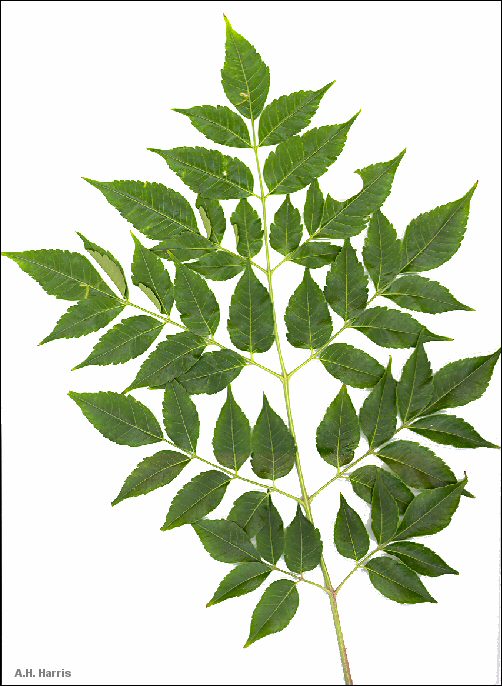
The word "pinnate" means "like a feather", and it's used to describe certain types of leaves. A feather is made up of a central shaft with a series of barbs coming off on either side. Thus a leaf whose blade is divided into small leaflets coming off of the two sides of a central shaft is said to be pinnate. It's possible to mistake the leaflets for leaves, but true leaves meet a stem just below a bud—and that bud is not present for leaflets.
Of course, this being biology, things can get quite more complex. Many
plants, for example, have leaves that are twice pinnate. That is, not only the blade is
divided pinnately into separate leaflets, but each leaflet in turn is pinnate. And then
there are those plants whose leaves not only have the blade divided into leaflets and
each of those leaflets divided into leaflets, but those leaflets in turn pinnately
divided once more to give a three-times divided leaf. It seems that turning over a new
leaf may be more confusing than you think.
![]()
Contributor: Arthur H. Harris, Laboratory for Environmental Biology, Centennial Museum, University of Texas at El Paso.
Desert Diary is a joint production of the Centennial Museum and KTEP National Public Radio at the University of Texas at El Paso.

A single, doubly pinnate leaf from a Chinaberry Tree. Four pairs of leaflets come off of the main shaft, with each leaflet in turn divided into several leaflets. Scanned image by A.H. Harris.